B2B Marketers Focus On Customer Journey Refinement In 2017
B2B marketers will be looking to improve the customer journey in 2017, and trends such as data management, content mapping and even chatbots are expected to play a role in meeting that goal.
Account-based marketing won’t be fizzing away in the New Year. The shift to a more account-focused approach will continue to evolve in the B2B landscape. However, the contender for the “No. 1 Buzzword Of 2017” is sure to be artificial intelligence, as B2B marketers look to make the most of the customer data they collect to improve the buying experience.
These are just some of the trends that are detailed in our 2017 Marketing Automation Outlook Guide. This guide features detailed interviews with industry thought leaders from companies such as Marketo, SiriusDecisions and Lenovo.
Read on to see what our panel of thought leaders predicted for 2017.
Analysts & Consultants

Cari Baldwin
BlueBird Strategies

Carlos Hidalgo
ANNUITAS

Matt Heinz
Heinz Marketing Inc.
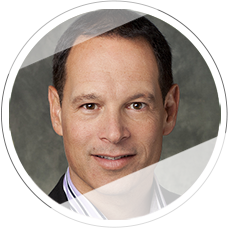
David Lewis
DemandGen
Cari Baldwin
President, BlueBird Strategies

What were the biggest challenges for B2B marketers in 2016?
Messaging
Articulating a clear and concise unique value proposition continues to plague companies, along with humanizing their message. We saw an increased effort to align messaging to stages in the buyer’s journey, but a more sophisticated approach to messaging and content strategy should be a priority going into the New Year.
Resources
Internal resources continue to be stretched, with too much to do and not enough time. Along with that is an increased investment in the marketing tech stack, but the technology is still being under-utilized.
Websites
Companies are challenged with providing a great experience for prospects once they hit their website. There are not enough conversion opportunities, preventing database growth and active nurturing. Plus, website copy is still full of jargon and company-centric messages.
What do you see as the biggest trends in marketing automation in 2017?
Use Of Bots/Artificial Intelligence
Cool technology is making its way into marketers’ lives, streamlining the way we receive information and making us more productive.
Enhanced Content Mapping
The function of mapping content to the buyer’s journey is making its way into marketing automation [processes]. A cool platform to watch is Akoonu — it enables marketers to collaboratively map the buyer’s journey so you can align internal activities like content creation, messaging and campaigns to buyers’ needs and processes. This is a trend we expect to see more of this coming year.
Integration
Marketing automation will be connecting with more and more tools out of the box.
What new opportunities do you see for demand gen in 2017?
Surge In ABM
It’s not only for early adopters anymore. More companies will be adopting an ABM approach, aligning marketing teams to work more closely with sales.
Aligning Inbound And Advocacy With ABM
There is a big opportunity for companies to align their inbound and advocacy tactics with ABM. We believe the three are interdependent, and by looking at your initiatives and where they can be aligned,
companies can be more effective.
Carlos Hidalgo
CEO & Principal, ANNUITAS

What were the biggest challenges for B2B marketers in 2016?
There were several challenges for B2B marketers in 2016, beginning with measurement of their efforts. The majority of marketers are still challenged by proving ROI and their contribution to pipeline and revenue — while still measuring the top of the funnel impact, social shares and website traffic.
Additionally, I believe one of the biggest challenges we saw in 2016 was around content marketing. The challenge is not creating content, but creating buyer-centric content that speaks to individuals on a buying committee at each and every stage of their buying process. This challenge will continue to present itself as long as B2B marketing organizations do not document their strategy and get an up-close, granular view of their buyer.
What do you see as the biggest trends in marketing automation in 2017?
My hope is that we see a trend into deep buyer insight, enabling marketing automation to be used as a conversation engine and not a batch-and-blast machine. I would like to see organizations begin to incorporate multichannel (that’s how their buyers buy) and utilize marketing automation to enable the conversations across these channels to both educate and qualify. This starts with deeply understanding your buyer and will only drive better value from the marketing automation investment.
What new opportunities do you see for demand gen in 2017?
I believe one of the biggest opportunities lies on the side of sales, in equipping and enabling sales people with the right skills to engage in discussions with informed and sophisticated buyers. There are still far too many organizations that take the approach of sales disruption, and it is only a path to failure. As demand generation is both a marketing and sales activity, sales leaders need to ensure their organizations have the right skills to partake in the buying dialogue, and do so in a way that is not intrusive or disruptive, but educational and informative. In doing so, they will earn the right to sell when the buyer has indicated as such, and in the end, increase their closed-won conversions.
FUN FACT

About 5 years ago, I topped out at 76.7 MPH on downhill skis. It was one of the biggest rushes — and scariest moments — of my life, and there is a 99.9% probability I will never attempt it again.
Matt Heinz
President, Heinz Marketing Inc.

What were the biggest challenges for B2B marketers in 2016?
Whether it’s common lead/opportunity definitions, alignment around objectives or simply coordinating better cross-functional account-based revenue activities, marketers saw their biggest challenge (and frankly their biggest gains in ROI and performance) tied to how well they’re coordinating and aligning efforts with the sales organization. This will be a challenge (and opportunity) into 2017 as well.
Another challenge many B2B marketers faced in 2016 was operationalizing the high potential inherent in Big Data. There’s almost too much data available to marketers now, which in too many cases paralyzes their ability to focus and execute. We’ve found that companies who leverage the right, fast data have been most likely to operationalize changes to their customer and prospect communications, and drive greater revenue performance as a result.
What do you see as the biggest trends in marketing automation in 2017?
We’ll see greater and better integration of predictive information into marketing automation. This means not just understanding which accounts are “ready,” but identifying specific, timely elements tied to individual buyers and decision-makers that can make engagement far more likely and lucrative.
We’ll experience a dramatic expansion of marketing automation beyond email. This will include integrated and coordinated engagement across digital channels, direct mail, events and, yes, even the telephone.
We’ll continue to see a shift from lead-based to account-based marketing automation. All marketing automation platforms will make it easier to engage across the target organization — and not just in individual lead silos.
What new opportunities do you see for demand gen in 2017?
Become a profit center for the business. It’s easy to talk about revenue responsibility from the marketing department, but truly living that promise is another thing. Too many marketers still promote activities over results, operational scorecards over sales pipelines, and quantity over quality.
Operating marketing as a profit center requires complete alignment at every level with other departments, such as business objectives and metrics, as well as a fundamental shift in daily behavior and decision-making by marketers at every level of the organization. What does it take to transform your team from a perceived cost center to a business-leading profit center? How do you change focus, objectives, scorecards and even culture to align more purely behind business priorities you can buy a beer with?
FUN FACT

I have a full woodworking shop in my garage, and have made everything from outdoor furniture to my middle son’s bed, Christmas ornaments, toy trucks and more.
David Lewis
Founder & CEO, DemandGen

What were the biggest challenges for B2B marketers in 2016?
B2B marketers are struggling more than ever to keep up with the rate of change across the digital marketing landscape. Not only does there continue to be a steady stream of new marketing technology to evaluate and leverage, but the depth and breadth of marketing channels and media types — such as social, video and ad tech — is forcing digital marketers to stay current on the latest trends and figure out how to incorporate them into their marketing programs. Marketing, more than ever, has become a 24/7, always-on discipline.
What do you see as the biggest trends in marketing automation in 2017?
Marketing automation is now essentially a decade old. Adoption has been slower than anticipated due to the lack of skilled resources in MarTech and the general lack of awareness by senior marketing leadership around the innovations in digital marketing. When you don’t have a top-down strategic direction to embrace MarTech and bottom-up resources, the market is stalled. That’s about to change in 2017, because the largest software companies in the world are all putting major investments in awareness, creation, sales and R&D for their marketing clouds. In short, we are well into the “early majority” stage of technology adoption for MarTech, and we’re finally going to see massive market share growth over the next three years, with 2017 being the tipping point year.
What new opportunities do you see for demand gen in 2017?
Spider-Man taught us that “with great power comes great responsibility.” While this superhero is a fantasy character, he couldn’t be more correct when it comes to the power that marketing has with MarTech and leveraging digital channels to drive revenue and market share. The Millennial workforce loves technology and is fearless when it comes to trying new things, so with the right leadership, well-aligned sales and marketing teams and a good product, the sky’s the limit in terms of the role marketing will play in 2017 for introducing new products and growing established businesses.
FUN FACT

I started vlogging in 2016 to keep myself current on social media strategy and ways to leverage video for storytelling and engagement.

David Raab
Raab Associates & CDP Institute

Justin Gray
LeadMD

Jim Lenskold
Lenskold Group

Troy O’Bryan
Response Capture Inc.
David Raab
Principal, Raab Associates & Founder, CDP Institute
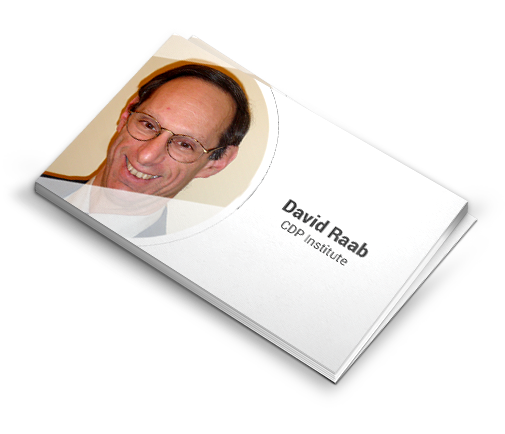
What were the biggest challenges for B2B marketers in 2016?
As always, the biggest challenge is getting enough quality leads. Maybe the biggest challenge should have been moving from leads to account-based marketing, but I’d say that’s still optional. It will be a real challenge when marketers’ bosses demand they make the switch. Other big challenges include effective utilization of social media and getting attention for content in an increasingly crowded market.
What do you see as the biggest trends in marketing automation in 2017?
The move to ABM is probably the biggest. Marketing automation vendors need to be the platform for this or risk losing control of their accounts. From the opposite perspective, ABM offers a rare chance for new vendors to make some headway in a crowded space. I also think we’ll see video become totally mainstream in 2017, which will be good in some ways. And it’s a no-brainer that artificial intelligence will be more commonly embedded in everything. In fact, this reply is being written by a bot.
What new opportunities do you see for demand gen in 2017?
People will need to be more creative to break through the clutter. So I’ll say that physical, dimensional marketing (sending cool stuff in boxes through the post office) will be a big opportunity. At the other range of the spectrum, analytics will allow marketers to tailor messages to individuals much more precisely, down to the psychological level.
Justin Gray
CEO, LeadMD

What were the biggest challenges for B2B marketers in 2016?
Digital marketing — and marketing, in general — are in a state of welcome transformation. Not since 2008 has the space seemed so frothy. In those days, it was marketing automation and we all went in — hard. Including myself. If it wasn't automated, it was crap. Eventually, common sense prevailed, leading up to an all-out revolt in this last year. Much of the measurement and reporting that was used as a selling point for tools like marketing automation and digital advertising ended up showing that marketing efforts at scale were doing very little to influence buying decisions. Instead, it was proven that many less scalable strategies like quality content creation, face-to-face interaction and hyper-personalization were actually the primary efforts paying off. It's a difficult time to be a marketer because, for the first time in a long time, the solution doesn't involve a shortcut.
What do you see as the biggest trends in marketing automation in 2017?
Marketing automation isn't going away in 2017; it's just gaining the intelligence it has needed all along. 2017 will transition this important topic into a no joking manner. Marketers will be looking at losing their jobs, vendors will be faced with having their software ripped out — the writing's on the wall. We have to start with data. Bad data can no longer be the accepted state of the union. In addition to clean data, the battle cry must be more data. We need to use data to create empathy for buyer needs and meet them with valuable content and messaging.
What new opportunities do you see for demand gen in 2017?
Demand gen is faced with an identity crisis for 2017. With the ABM movement, demand gen has a big PR problem. The opportunity for marketers who have fostered a real "top-of-funnel" skill is to take those strategies and tactics and get smarter with them. By integrating demand gen tactics with an account engagement focus, marketers can drive real value and highly visible revenue returns. Rather than generating leads, they have to be generating engagement within accounts. This means building out the buying committee coverage within an agreed-upon ideal customer profile and stimulating intent within that target base.
FUN FACT

I'm a huge metal and hip hop fan. I think the best modern day marketers are today's hip hop/pop artists — what they're doing to stand out in a saturated market is something everyone can take a cue from.
Jim Lenskold
Managing Director, Lenskold Group

What were the biggest challenges for B2B marketers in 2016?
Data quality and accessibility have improved greatly, and this has elevated data aggregation up to a major challenge in 2016. It is no longer enough to run dashboards and metrics within each data source. Marketers have a critical need to tap into data integrated across diverse systems, such as impressions, engagement, social activity and web activity, along with sales and financial outcomes. There are many marketing touchpoints generating many outcomes within the buyer's journey and customer relationships. Marketing ROI metrics, measurements and decision support must have visibility into more than just the trackable linear path.
What do you see as the biggest trends in marketing automation in 2017?
One of the most significant marketing automation trends heading into 2017 could be the least glamorous compared to the more exciting areas of social media, relationship management or campaign automation. Yes, the time has come for “data blending” to take the prize. Once considered a back-office operation, this technology is making its way to the marketing desktop. It’s not the functionality, but the opportunities enabled that puts this on the hot list.
What new opportunities do you see for demand gen in 2017?
The opportunity heading into 2017 is to leverage the multi-year trend of automated dashboard reporting with a more robust data set. Large companies may have tackled this at the corporate level with big data systems such as Hadoop, but this has not been solved for everyday data merge needs. We’re seeing dashboard technologies such as Tableau, Domo and many others improve their data blending functionality. My team, as well as several of our clients, have recently adopted Alteryx for data blending. The time savings and quality improvement help to overcome common issues such as inconsistencies in data fields and values, differences in time periods and unclear definitions of metrics within diverse systems. Data feeds are now cleansed, transformed and merged with minimal effort. This is a game-changing accomplishment that cannot be underestimated.
Automation without supporting processes and the right organizational culture is not a solution. This combination of aggregated data and dashboard tools is the foundation of a solid marketing ROI framework. Key metrics can then be defined based on alignment to financial contribution.
Troy O’Bryan
President & CMO, Response Capture, Inc.
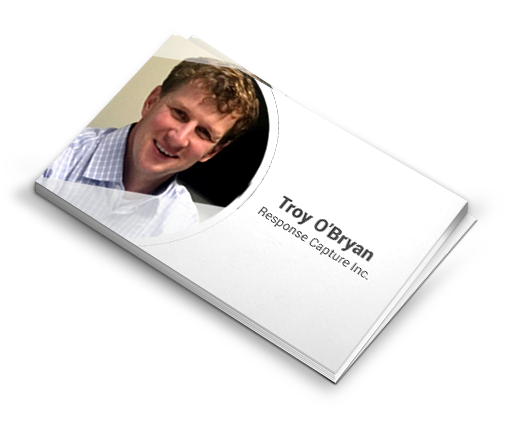
What were the biggest challenges for B2B marketers in 2016?
Collecting and organizing data from the myriad of internal and external sources was a continued challenge in 2016. With the rate of data decay at 2% to 4% per month, I have yet to hear a marketer say “our data is perfect.” Regardless of the organization size, data exists to empower timely communications, yet having the resources to consolidate the information and the processes to maintain it in real-time are scarce.
What do you see as the biggest trends in marketing automation in 2017?
The biggest trends for marketing automation will be buyer journey reporting and segmentation capabilities, so marketers can deploy more trigger-based communications. The focus of marketing automation is shifting from an acquisition to an upsell/cross-sell and retention platform. As the shift is happening, B2B marketers are expanding their efforts to improve customer service and lifetime value, in addition to driving net-new revenue.
What new opportunities do you see for demand gen in 2017?
In 2017, demand gen marketers will embrace the new account-based marketing (ABM) capabilities that were introduced in 2016 within their MarTech stack. Full adoption of ABM is an organization-wide change from broad-based demand generation efforts. Thus, ABM efforts will start as pilot programs to gather learnings and benchmarks to set executive expectations. As ABM is adopted, more alignment between marketing and sales will result as they jointly focus on how to increase engagement, average deal size and revenue among a defined list of accounts.
FUN FACT

In high school, I spent my summers on a commercial fishing boat in Alaska. It was a great teaching ground for a career in marketing, as you always have to anticipate change and perform at a high level with very little sleep.

Laura Cross
SiriusDecisions

Mac McIntosh
Mac McIntosh, Inc.

Jeff Pedowitz
The Pedowitz Group

Patrice Greene
Inverta
Laura Cross
Research Director, Demand Creation Strategies, SiriusDecisions

What were the biggest challenges for B2B marketers in 2016?
“Balance” was the key word for 2016. With more tools available, more measurement required and more overall complexity, B2B demand creation has become increasingly sophisticated. It is easy for demand marketers to overemphasize a single item (e.g., optimizing a specific feature of a technology platform, overanalyzing website clicks) at the expense of more important objectives that affect the performance of the entire demand creation function and, ultimately, pipeline contribution.
For 2017, we expect continued organizational expansion in data, analytics and insights, but we also have observed a need to strengthen core integrated program planning skills. A balanced team that can gather insights and put them to use inside integrated programs is essential.
What do you see as the biggest trends in marketing automation in 2017?
We believe 2017 trends will include a focus on organizations’ internal processes — understanding the current state and looking for areas to optimize the platform to meet the ever-changing needs of the business. Marketers will continue to leverage MAP for demand creation purposes, but [they] will incorporate account-based marketing and customer lifecycle use cases.
We expect marketers will concentrate their efforts on data management. The overwhelming amount of information collected requires marketers to evolve their data strategies to make data-driven decisions.
Additionally, marketers will be looking to scale. They will continue to evolve from manual and ad hoc to repeatable, real-time processes that require automation.
What new opportunities do you see for demand gen in 2017?
An area of opportunity for B2B marketers in 2017 is the ability to measure demand creation influence at the account and buying center levels. In most B2B buying situations, there is more than one individual involved in the purchase decision. Since teams of individuals collect and share information, and since individuals come in and out of the buying process at various points in the buyer’s journey, simply tracking the behaviors of any given individual is unlikely to provide a useful picture of the true buyer’s journey. Instead, marketers must measure and analyze behaviors at the account and buying center levels.
FUN FACT

I have Irish triplets. Except, instead of saying three children born within three years, our singleton was only 13.5 months when our twins were born.
Mac McIntosh
President, Mac McIntosh, Inc.

What were the biggest challenges for B2B marketers in 2016?
The biggest challenge for B2B marketers in 2016 was the marketing technology stack, including selecting, implementing and optimizing it. The list of available marketing technology solutions has grown from approximately 150 in 2011 to more than 3,500 in 2016.
Issues include who will run the marketing technology stack, and how to pay for it. You can reallocate from existing budget or find additional funding. Other challenges include integrating (and reducing to a manageable few) the various marketing technology solutions, and tracking activity, results and ROI across devices and/or online and offline.
Additionally, if you have poor lists, lackluster positioning, ho-hum messaging and weak offers/calls-to-action, you will get similar output (i.e., put garbage into marketing automation, and you’ll get garbage results).
What do you see as the biggest trends in marketing automation in 2017?
Trends we'll see include applications moving to becoming platforms and integrating [capabilities], rather than staying as point applications such as email marketing automation, as well as providing built-in testing (e.g. A/B, multivariate), better reporting (e.g. numbers, graphics, drill-down to lists) and multi-touch attribution.
We'll also see marketers using activity and results data, as well as artificial intelligence (AI), to score leads; integrating inbound and outbound marketing (e.g., email follow up and ad retargeting); taking advantage of personalization and context-relevant messaging and content; and using AI and “bots” to get answers or information, or to help make decisions, instead of more traditional reporting tools.
What new opportunities do you see for demand gen in 2017?
A few opportunities include better mobile usability, more and better integration between inbound and outbound marketing, and moving from optimizing the funnel to optimizing the hourglass.
FUN FACT

I’m a Cheesehead, having grown up only a few blocks from Packer Stadium in Green Bay, Wisconsin.
Jeff Pedowitz
President & CEO, The Pedowitz Group

What were the biggest challenges for B2B marketers in 2016?
Here are the three biggest challenges I've seen:
Talent Gap: It is getting harder for B2B marketers to find the skills they need to get everything done. Budgets aren’t growing tremendously; the
job is also getting bigger and harder.
Data Gap: As technologies and channels continue to proliferate, the data gap also continues to grow. Marketers are increasingly challenged with harnessing the data they collect and developing any kind of key insights to drive business strategy. Investing in BI and analytics does not address the data gap; it only makes it worse, as this is just a cover for an underlying structure that isn’t working together.
Technology Overload: MarTech continues to grow, but most marketers are struggling to even adopt the technology they have, especially marketing automation platforms. It has all gotten too complex. Most marketers are getting by with investing in a few key systems and ignoring the rest.
What do you see as the biggest trends in marketing automation in 2017?
We should stop using the term marketing automation, as it really isn’t applicable anymore. Call it a marketing platform. Call it a customer engagement platform. But don't call it marketing automation; it has moved way beyond that. I think there is going to be a "rubber meets the road moment" in 2017. The vendors are trying to package and repackage their software and get an uplift in fees. Customers are trying to simplify and rationalize their investments. Something has to give.
What new opportunities do you see for demand gen in 2017?
Demand generation needs to adopt social selling and content engagement as the tip of the sword. There needs to be an emphasis on doing fewer, but high quality things. Account-based marketing will continue to grow as an area of focus.
FUN FACT

Between working and being a husband and dad to three kids, is there really time? I like all sports, particularly football and basketball. I enjoy traveling with my family and going to the movies. I also like learning new recipes and trying them at home.
Patrice Greene
President & Co-Founder, Inverta

What were the biggest challenges for B2B marketers in 2016?
I saw a lot of organizations struggle with account-based marketing (ABM). I witnessed them ask questions such as: “How much investment should I make in ABM? Where should I start? How do we get sales and marketing to partner on this? What would ABM look like for my business?” Also, organizations that bought into ABM struggled when their ABM efforts surfaced critical data problems. More specifically, disparate data sources that were not integrated correctly and affected their ability to personalize, analyze and report.
What do you see as the biggest trends in marketing automation in 2017?
I think we’ll continue to see organizations build best-of-breed marketing stacks and integrate ancillary technology platforms with MA (Demandbase, LookbookHQ, Mintigo, etc). With best-of-breed stacks comes an investment in data standardization and management, and we’ll continue to see marketing invest in data management to get the most out of their tools. Finally, we’ll continue to see the slow disenfranchisement of the inbound-only approach as marketing invests more in outbound, highly targeted strategies.
What new opportunities do you see for demand gen in 2017?
The name of the game is customization and customer experience. New technologies allow for the construction of highly customized environments. Those environments can create highly personalized, contextual experiences for customers and prospects. However, the challenge is the delta between what the technology can accomplish and what the organization is committed to understanding about the entire customer lifecycle — prior to and following the initial purchase. Marketing has a huge opportunity to prioritize insights around the customer lifecycle and use those insights to grow wallet share.
FUN FACT

I love to host parties. I enjoy mixing cocktails, and my husband is a former chef — so we’re a good pair for entertaining!
B2B Experts

Heidi Bullock
Marketo

Kipp Bodnar
HubSpot

Jeff Reekers
Handshake

Laura Ipsen
Oracle Marketing Cloud
Heidi Bullock
Group VP, Global Marketing, Marketo

What were the biggest challenges for B2B marketers in 2016?
Many marketing organizations have been successful in driving revenue for their companies, yet it’s still very hard to create sufficient pipeline in a predictable manner and accurately forecast it. Today, more marketers have the ability to measure ROI, but it is still challenging to obtain consistent results from a program. What worked initially may become less effective over time, so there is more pressure to innovate and use technologies to help scale programs.
One size does not fit all when it comes to MarTech stacks, so this year, many organizations spent considerable time figuring out what is really required versus what is nice to have. This is a tough area that will probably continue into 2017. With the onset of more technology grew the amount of data and how to manage it. I personally saw this topic come up as a challenge more this year than any other: data governance, management and hygiene. Lastly, and the most significant challenge, is not the technology but the change management and people required. Change management is a tough process, and getting people out of their comfort zone is hard. It really is the most difficult part.
What do you see as the biggest trends in marketing automation in 2017?
More companies will leverage sophisticated and advanced automation features, such as running and measuring multichannel campaigns, using account–based marketing capabilities and taking advantage of predictive lead scoring. We will see richer third-party integrations as marketing teams evolve their technology stacks. I would like to see more use cases with IoT. For example, at events, there are great ways we can track what someone does — and that is information that can enrich programs and be scored and measured using marketing automation. Lastly, we will see marketing automation being used for customer marketing, support and other teams within organizations to understand a holistic view of the customer.
What new opportunities do you see for demand gen in 2017?
Demand generation is not easy, because it is one area of marketing that requires continual evaluation and optimization. Good demand gen marketers understand their market and buyer, and how to present the offering in a meaningful way. To deliver on that value proposition, there are a few things that will become opportunities specifically for 2017. I love when content is used at the right time, and native advertising is a great example of that. A combination of personalization with predictive is very powerful and can provide a great user experience when done right. I also think more demand generation marketers will move away from volume and think more about attracting and retaining the right buyers. Lastly, data only is becoming more critical for all revenue teams to run smoothly. More hiring and investment will take place to support good data practices.
Kipp Bodnar
CMO, HubSpot
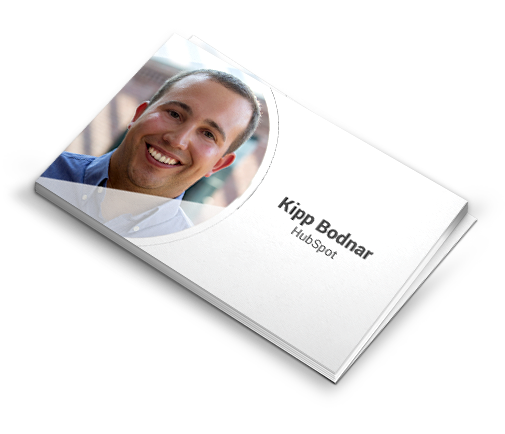
What were the biggest challenges for B2B marketers in 2016?
This year we saw a continued shift in the balance between supply and demand. The growing ubiquity of open APIs, 3D printing and advances in manufacturing and distribution have made it even easier for new companies to create a product and go to market. It used to be that you could count on competing against maybe a handful of similar businesses. Now, new startups are coming onto the scene in droves, causing supply to outweigh demand and making it tougher for marketers to break through the noise. Marketers are going to have to continue to innovate in the ways that they package their message and turn to new channels to distribute their content.
For 2017, we expect continued organizational expansion in data, analytics and insights, but we also have observed a need to strengthen core integrated program planning skills. A balanced team that can gather insights and put them to use inside integrated programs is essential.
What do you see as the biggest trends in marketing automation in 2017?
Chatbots represent a huge opportunity for marketers in the New Year, particularly in inbound marketing. As chatbots become more sophisticated, they’ll be able to handle even more automated marketing tasks. By delegating these tasks to a bot, marketers will be able to focus more on creating meaningful content and better connecting with their audience.
What new opportunities do you see for demand gen in 2017?
With a far greater set of content diversity today, one thing is for certain in the coming years: Building a great brand has never been more important.
As people adopt the latest content platforms, they’ll immediately look for the same handful of brands they like and trust. Sure, other brands will find notoriety in time, but those companies with really strong brands will have an early bias with early adopters and movements on these platforms.
Looking to 2017, this boom in content diversity makes it even more important for demand gen professionals to understand the wide range of algorithms available today in order to get their content in front of as many eyes as possible. The real key to next-level success: Companies that focus on building a strong brand first will have even more opportunities to reach their ideal audiences wherever they might be.
FUN FACT

I love to cook and bake, and have an irrational obsession with cooking knives. I am currently on a three-year wait list for a knife made by a small company in Georgia. They are true artists.
Jeff Reekers
VP of Demand Generation, Handshake

What were the biggest challenges for B2B marketers in 2016?
The biggest challenge in 2016 was the overall shift in mindset from lead generation to account marketing. Selling and marketing a SaaS product into a set of named accounts requires tremendous partnership and coordination with the sales organization, and this is an area many marketing departments struggle with.
Additionally, SaaS market trends universally indicate the world is becoming more competitive and complex, resulting in an elevated level of risk at the end of the sales process. B2B marketers have to be empathetic to this process and understand that the evaluation of their results — and that’s bottom line growth — is largely out of their hands. The challenge is building this risk into the system.
What do you see as the biggest trends in marketing automation in 2017?
In 2017, we'll see a shift in marketing automation to better account for scoring and prioritizing based on accounts and cohorts, as opposed to leads. In enterprise selling, a lead is simply one component of a complex sale, and marketers must learn how to weigh the influence of each member of an account within an overall go-to-market strategy.
In 2017, we'll see a decrease in emphasis on lead generation, and more of a focus on sales-stage and overall go-to-market impact.
What new opportunities do you see for demand gen in 2017?
Demand generation professionals have a tremendous opportunity to gain a "seat at the table" by owning the sales pipeline. This means, rather than a distinct marketing function, we'll see demand generation trending toward a bridge between marketing and sales. It's really the connective tissue.
C-level executives want to know the risks associated with the entire sales funnel, and demand generation is the function that is best suited to be accountable for pipeline and top-down forecasting.
FUN FACT

With a group of 12 other individuals across the globe, I trekked 250 kilometers over six days across Northern Finland on cross-country skis, without ever having stepped foot on skis of any type prior.
Laura Ipsen
Senior VP & General Manager, Oracle Marketing Cloud
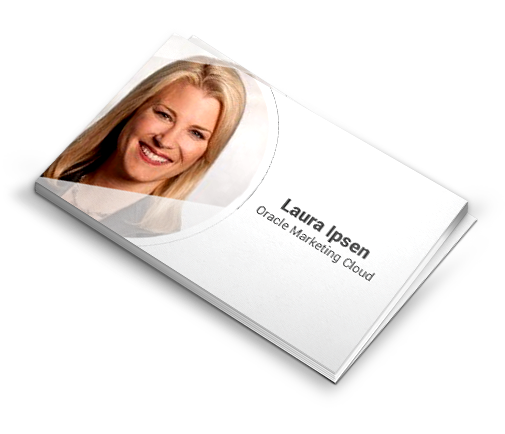
What were the biggest challenges for B2B marketers in 2016?
B2B marketers want to understand who their buyers are and what they want, but that information is easily lost or muddled in translation between marketing, sales and the buyer. Most marketers have disjointed systems that make it difficult to aggregate the profile data their systems collect to create a unifying cross-channel experience. Thus, siloed data and fragmented customer profiles result in irrelevant customer messaging, and that makes it challenging for marketers to deliver the right information at the right time in the buyer’s journey.
In addition, marketers are under more pressure than ever to demonstrate the impact their programs have on revenue. For marketers to succeed, it is critical to understand which channels and offers generate the most interest, engagement and conversion through reliable reporting and analytics.
What do you see as the biggest trends in marketing automation in 2017?
Customer data will still be a huge focus in 2017. B2B marketers continue to deliberate the best ways to collect, connect, clean, slice and apply data to the right situations. Though marketers have improved in this area in the last couple of years, there are many who are just now approaching this mountain of information and turning it on in their business. Many are still learning how to manage and build their marketing systems. As a result, we will see a bigger focus on marketing automation best practices, services and support to help marketers better understand how to build and manage their systems, and a significant concentration on connecting to the broader ecosystem of partners for a business’ marketing technology stack.
What new opportunities do you see for demand gen in 2017?
For 2017, we see big opportunities in customer enablement, support and services. You are probably wondering what that has to do with demand generation. Marketing technologies have grown at an exponential pace. How they interact and integrate with one another is key to the success of a marketer’s whole program. We need to do more than just give our customers tools to do their job; we need to help them understand how to leverage these technologies in a way that positions them for success when they promote their businesses. It’s the flywheel effect: Once the automation has been set up appropriately and tweaked to hum efficiently, inertia takes over and momentum starts to build. This is especially important when implementing multiple technologies from various vendors and creating campaigns that need to adapt according to the needs and intent of customers.

Michelle Huff
Act-On Software

Mike Kostow
Salesforce Pardot

Peter Isaacson
Demandbase

Darian Shirazi
Radius
Michelle Huff
CMO, Act-On Software

What were the biggest challenges for B2B marketers in 2016?
Customer marketing is, and will continue to be, one of the bigger challenges for B2B marketers to tackle in 2017, as marketers start to build strategies and programs beyond the initial sale. With a rise in the subscription economy, post-sales initiatives are becoming increasingly more important. As more revenue begins to hit the renewal ledger, the retention of current customers becomes just as critical to long-term growth as acquiring new ones. With this shift in mindset, we will begin to see companies make greater investments in customer marketing technology, people and programs. Marketing will play an even more integral role in stewarding the customer experience and bringing greater alignment to pre- and post-sales functions.
What do you see as the biggest trends in marketing automation in 2017?
The use of marketing automation has just scratched the surface. The responsibility of marketing automation will become more pervasive throughout the customer experience to help brands better connect with buyers, and support the many stages of engagement — from awareness and acquisition through retention and loyalty.
What new opportunities do you see for demand gen in 2017?
What we will see in 2017 is a heightened focus on predictive for demand generation. Marketing automation platforms will play an enhanced role in this enablement, collecting and analyzing engagement data over time and across campaigns to prescribe marketers with direction and insight on who to engage, when to engage and what to engage with. Marketing automation will be like the autonomous driving car (let the car drive you or take the wheel and drive yourself, where marketers can choose to leverage the prescribed course of action provided through predictive, or overwrite it and use their conventional wisdom.
FUN FACT

I went backpacking around Europe by myself when I was 22, visiting six different countries in six weeks. I met amazing people along the way and enjoyed every minute!
Mike Kostow
Senior VP, GM, Salesforce Pardot
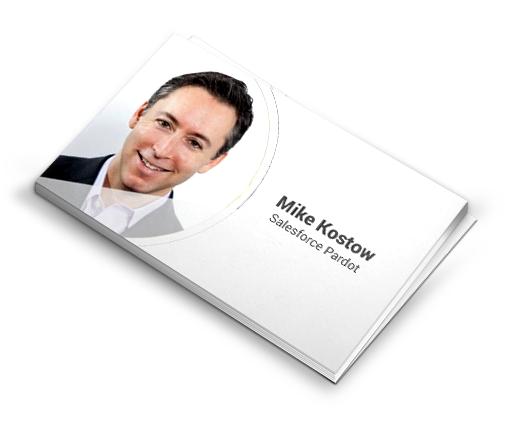
What were the biggest challenges for B2B marketers in 2016?
This year, Salesforce Pardot conducted a research survey with Harvard Business Review Analytic Services to better understand the challenges of B2B marketers. According to the 556 executives surveyed, marketers are experiencing a range of challenges as they seek to turn data into engaging experiences and sales.
One challenge is that technology tools are not sufficiently user-friendly, and are often hard to integrate into existing marketing and sales systems and processes. As a result, marketers lack access to the capabilities they need to engage customers and help their sales colleagues be successful. And even when marketers have access to the tools, many organizations have yet to develop the analytic skills needed — namely, the ability to interpret data once they have access to it. Only around two-fifths of survey respondents said their marketing staff have the training they need to be effective.
What do you see as the biggest trends in marketing automation in 2017?
In 2017, the use of artificial intelligence (AI) to power predictive lead scoring in marketing automation will be increasingly prevalent. By leveraging AI capabilities, sales will be able to predict which opportunities are most likely to close and receive recommendations on actions to take to close the deal. This technology will empower marketers to automate more tasks so they can focus on more strategic initiatives, recommend sales and marketing teams the next best action to take in interacting with a customer, and discover new clarity on customers to create improved personalization.
What new opportunities do you see for demand gen in 2017?
This coming year, marketers will be considering whether to add account-based marketing (ABM) to their 2017 marketing plan. However, creating a 1:1 customer experience for an entire account is not an easy task, and won’t be the right marketing strategy for every company. Whether or not the ABM approach is right for a particular marketing team will hinge on criteria like whether sales and marketing teams are properly aligned and whether a consistent and personalized multi-channel strategy is in place.
Ultimately, ABM is an approach hyper-focused on the customer that, when embraced and thoughtfully executed, can be an asset to a company’s bottom line this coming year.
FUN FACT

I am well known (and made fun of) at Salesforce for having an extensive collection of plaid shirts.
Peter Isaacson
CMO, Demandbase
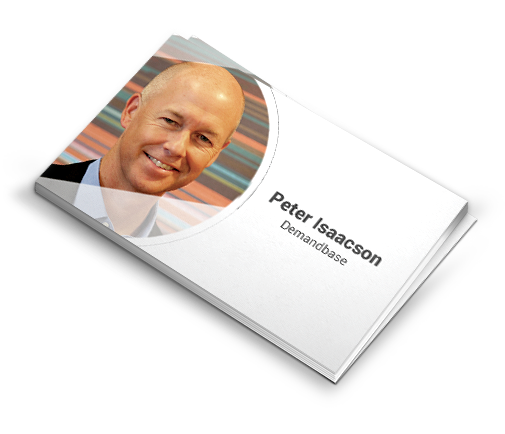
What were the biggest challenges for B2B marketers in 2016?
The two biggest challenges we saw B2B marketers battle this year were in defining the right tech stack and navigating all of the noise and discussions around account-based marketing from vendors.
What do you see as the biggest trends in marketing automation in 2017?
AI will make mass email marketing tools obsolete, as well as the resulting “spam email” — automatically scanning out the “bad” leads and creating custom, personalized communication instead. When thinking about the rise of AI technology among marketers in 2017, the most interesting and valuable use for it is the ability for marketers to have one-on-one, personalized conversations with buyers who know their pain points, goals and ambitions. This type of personalized communication eliminates the worthless spam that often plagues marketing today.
What new opportunities do you see for demand gen in 2017?
Artificial intelligence is a big deal these days, but let’s not forget it’s the basis for the movie Terminator! But way before that apocalyptic scenario happens, it will help B2B marketers. Over the past few years, technology and innovation have fundamentally changed how marketers represent their brand, convey value propositions to customers and drive business impact. It has also laid the ground for account-based marketing (ABM). ABM has allowed marketers to get away from only tracking CTRs, MQLs and website clicks, and instead focus on how much marketing contributes in pipeline and bookings. Instead of relying on look-alike modeling using firmographics or a business directory, AI will allow B2B marketers to tap into more data and understand the entire business network of a company from customers, partners, suppliers and more. This complete, 360-degree view will allow marketers to better predict potential buyers, personalize campaigns and close more deals, further extending the value of marketing in the C-suite.
FUN FACT

I can’t live without these apps on my iPhone: Waze (for commuting), Pandora, Google Maps, Vivino (where you take a picture of a wine’s label and it tells you the price), Nike Running, Politico and CBS Sports.
Darian Shirazi
CEO, Radius

What were the biggest challenges for B2B marketers in 2016?
Access to high-quality data and relevant insights from customer data were the biggest challenges for B2B marketers in 2016. There’s an abundance of data in marketing currently, but the “fire-hose” effect across marketing technologies is not helping marketers identify the right insights they need. There’s a growing need for better data and insights, and marketing leaders that can effectively address this in the coming year will lead the charge by driving pipeline for their business.
What do you see as the biggest trends in marketing automation in 2017?
The biggest trend in marketing automation in 2017 will be around artificial intelligence (AI) and the larger role it will play in the MarTech stack. Most SaaS vendors are heading towards AI, but success will be defined by vendors that can ensure that the data their AI models are built on is high quality. Maintaining accurate, valuable data will determine the winners in 2017 and also define how well AI technology will live up to its promise of driving change and improvement for businesses.
What new opportunities do you see for demand gen in 2017?
The future of all enterprise processes will be driven by AI, which requires the highest quality of data to be successful. AI is where all business processes are headed. However, many companies have not addressed how they will ensure that the data their AI models are built on is high quality. Data quality is key to pulling accurate insights and actions, and in 2017, we will see more companies focus on solving the challenge of maintaining accurate, valuable data so that AI technology lives up to its promise.
I'm on the board of the Zuckerberg San Francisco General Hospital, and I’m very active in the UCSF Benioff Children's Hospital community.

Michael Ballard
Lenovo
Michael Ballard
Senior Manager, Digital Marketing, Lenovo

What were the biggest challenges for B2B marketers in 2016?
Measurement continues to not only be a challenge, but a requirement. While measurement in some areas is much easier than others (email vs. programmatic display), marketing can no longer be satisfied with generic campaign results. Metrics must now be accurate, specific and show the entire customer journey. While there are many vendors helping to bring all this information together, system integrations continue to be very challenging. Some are either [too] generalist or too niche. For example, we’ve decided to take the route of creating our own dashboard systems. While it’s a lot of up-front and ongoing work, it’s very much worth it in the end.
What do you see as the biggest trends in marketing automation in 2017?
The latest buzzword seems to be "artificial intelligence," but it’s still a wide open topic and not specifically defined. All we know is that computing power is exponentially increasing, access to data is as diverse as it’s ever been, and we have the opportunity to make smarter and faster decisions. The major benefit to us marketers is the increased efficiency in spend. We no longer need to waste ad dollars showing ads that have no context to our customers. Instead, AI can be used to not only pinpoint who to send to, but when and how.
What new opportunities do you see for demand gen in 2017?
With the increased availability of publicly available user behavior data and data modeling, we have a tremendous opportunity to deliver timely and relevant content to our existing and potential customers. The days of educated guesses of who to send specific content to are going away. In addition, this type of approach drastically changes the lead scoring landscape.


